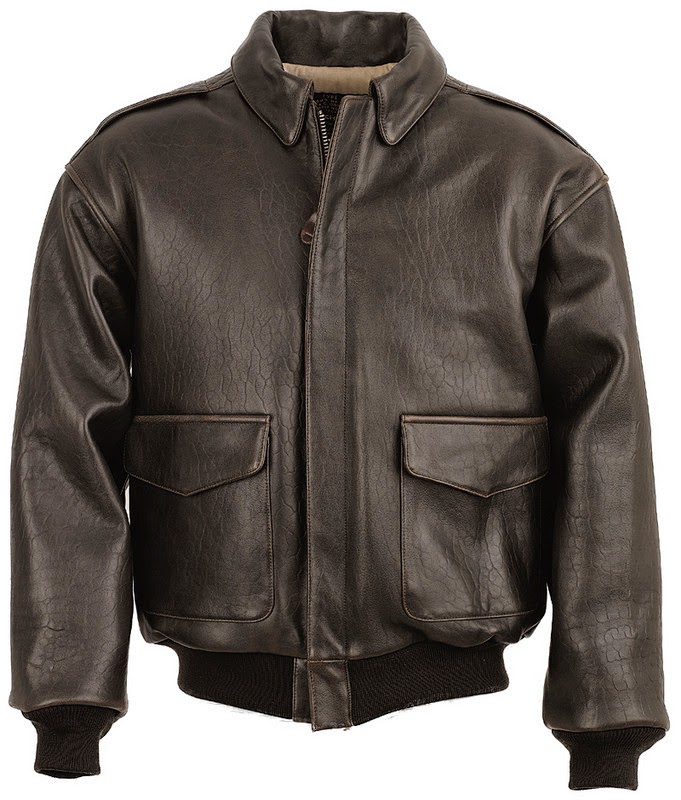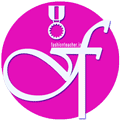A-2 jacket
The Type A-2 leather flight jacket is a military flight jacket closely associated with World War II U.S. Army Air Forces pilots, navigators and bombardiers, who often decorated their ja
ckets with squadron patches and elaborate artwork painted on the back. Sometimes casually referred to as a bomber jacket, its original designation was "Jacket, Pilot's (summer)", and its wartime usage was limited neither to pilots nor to bomber crews.
History of A-2 Jackets
The Type A-2 flying jacket was standardized by the U.S. Army Air Corps as the successor to the Type A-1 flying jacket adopted in 1927. The Type Designation Sheet lists the dates for Service Test as September 20, 1930, and Standardized (adopted as standard issue) on May 9, 1931. The military specification number for Type A-2 is 94-3040. The Drawing Number was given as 31-1415, but the spec. labels found in the jackets themselves show this to be 30-1415.
On April 27, 1943, Type A-2 was declared Limited Standard, meaning that only replacements for in-service units could be ordered. New units would now be supplied with cloth-shelled jackets such as Types B-10 and B-15.
The U.S. Army Air Forces Class 13 Catalog listed the garment as "Jacket, Flying, Type A-2," with Spec. No. 94-3040. It describes the jacket's construction as "seal brown horsehide leather, knitted wristlets and waistband (skirt)." Broadly similar in construction to the A-1, it replaced the A-1's buttoned front and pocket flaps with a zipper and hidden snap fasteners (although some very early A-2's retained the pocket buttons). The A-1's stand-up knitted collar, which buttoned closed, was supplanted in the A-2 by a shirt-style leather collar, with hidden snaps at the points and a hook-and-eye latch at the throat. Stitched-down shoulder straps were also added to the design. Sizes were listed as ranging in even numbers from 32 through 54.
Design and construction
Although the actual design would vary slightly depending on the manufacturer, and even among contracts within a single manufacturer, all A-2 jackets had several distinguishing characteristics: a snap-flap patch pocket on either side that does not have hand warmer compartments (hands in pockets were considered unfit for a military bearing), a shirt-style snap-down collar, shoulder straps, knit cuffs and waistband, a back constructed from a single piece of leather to limit stress on the garment, and a lightweight silk or cotton inner lining with a leather hang strap (not a loop) and military spec tag attached just below the back collar.
Prior to World War II the collar was sewn to a neckband or "stand" like those found in dress shirts, a time-intensive operation. Wartime contracts generally had "simple attached" collars, sewn directly to the back panel and rolled over, although Rough Wear and Perry continued using the collar stand throughout. Similarly, most pre-war (and some wartime) A-2s had inset sleeves, attached at a better attitude for body movement. This too was time-intensive and gave way to "flat attached" sleeves whose bottom seams met up with the body side seams.
Most pre-war and wartime A-2s were constructed of horsehide, which was either vegetable- or chrome-tanned. Some original A-2's were made from goatskin (as was the Navy G-1 jacket), and others possibly from cowhide (which can be very difficult to tell from horse if tanned identically). All Spiewak and Doniger jackets are of goat, as are many Cable, Dubow, Bronco, Perry, and Rough Wear examples.
Wartime-issued A-2 jackets appear in a wide range of color tones and hues, although all are based on two distinct colors: Seal (dark brown to almost black) and Russet (pale red-brown to medium brown). Most seal jackets were russets re-dyed during the war to cover scuffing and discoloration, although some contracts, like the Aero Leather 21996, were dyed seal right from the start. Original knit cuffing typically matched the leather or came close, but exceptions exist, such as Aero Leather's eye-catching rust-red cuffing on seal brown hide.

Early A-2's had linings made from silk, per the original specification. This was likely spun silk, a thin, breathable shirt-like fabric. The lining changed to cotton later on. A letter from the Materiel Division of Wright Field, dated 7 January 1939, states that the use of silk in flying jackets had been discontinued "as its procurement was found not to be feasible." The letter does not say when this happened, but it makes clear that the vast majority of original A-2 jackets have cotton linings. (Reference?)
The A-2 was one of the early articles of clothing designed expressly to use a zipper. Zippers were made of steel or brass, and some were nickel plated. Known zipper suppliers were Talon, Crown, Conmar, and Kwik, with Talon providing the majority of zippers used in wartime A-2 construction. Until about 1940, Talon zippers with riveted or grommeted metal bottoms were used.
Unlike modern, loose-fitting jackets, the original A-2 looks to us today a rather trim-fitting jacket. Period photos and films reveal a jacket which could be worn fitted and sharp looking or a bit baggy and loose in the body. It was designed to fit the thinner male of the time- original A-2 jackets worn by modern men may seem a bit snug in the shoulders. This is particularly true of pre-war contract garments such as the 1933 Werber and the 1938 and 1940 Aero Leathers. Period photos and films show that the A-2 was typically worn over a shirt or a shirt and flight suit; airmen were more likely to switch to a sheep-lined jacket or, later, an electrified flight suit for wintertime or high-altitude operations.
Reproductions
Just as a cottage industry appeared during the war to meet the need for A-2 jackets, so too does such an industry still exist today. Because the A-2 never
went out of style, production of it never really ceased. Over the years it has varied in style and accuracy relative to the original war-era design, but it has
remained visible in popular movies and TV shows of the 1950s and 1960s.
In the mid-1970s several small companies catering to purists began undertaking the job of designing and constructing highly authentic reproductions that were
as close to the original war era A-2 as possible. Duplicating wartime patterns,often obtained through "reverse engineering" from dissected originals, and using
correct hides, all-cotton thread, and even actual the World War II-era-old stock Talon zippers, they have effectively recreated a wartime-era jacket that can be
worn daily without fear of damaging a valuable original. Some manufacturers have even gone so far as to reproduce the particular details of specific World War II
A-2 production contracts. Such attention to detail doesn't come cheap, as such jackets regularly cost $800 or more. Manufacturers in this highest-quality bracket include the following.
- A-2 Leather Flight Jacket (Europe) Sells USAF-spec A-2 jackets in horsehide only and AN6505-1 Aviators Kit Bag
- Cockpit USA (New York, USA)
- US Wings (Hudson, Ohio, USA) Sells USAF-spec A-2 jackets in horsehide and goatskin
- Lost Worlds Inc. (New York, USA)
- Eastman Leather Clothing (Devon, UK)
- Aero Leather Clothing (Scotland)
- Buzz Rickson's (Tokyo, JAPAN)
- The Real McCoy's (Kobe, Japan)
- Toys McCoy (Tokyo, JAPAN)
- Pherrow's Sportswear (Tokyo, JAPAN)
- Good Wear Leather Coat Company (Seattle, Washington, USA)
- Gibson & Barnes (El Cajon, CA) Makes several Historical A-2s made from either horsehide or goatskin
- Bill Kelso Mfg Co. (Europe)
Cirrus (Norfolk, England)
There are jackets that are somewhat less expensive. These do not reproduce any specific World War II A-2 production run, but they do use correct World War II
design features (correct construction, collar, pockets, snap style, clasp style, hides, thread, cotton liners, colors, wool wrist and waist bands, etc., even
newly manufactured Talon-brand zippers). Jackets in this range are sold by:
U.S. Authentic Manufacturing Co. (New York, USA)
Repro A-2s are most popular in Japan, where there is a collector market for reproduction American vintage clothing. Much of it is limited-edition and
unavailable in the West, and priced up to twice the value of high-end repros in other countries. Both the limited availability and the inflated prices increase
their prestige appeal to Japanese collectors.






